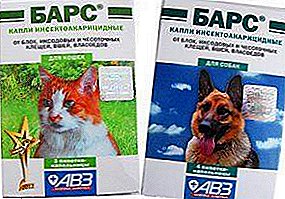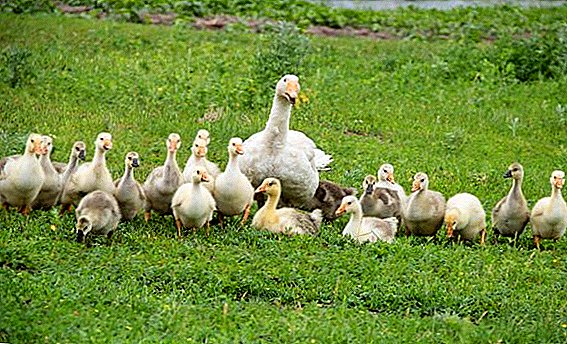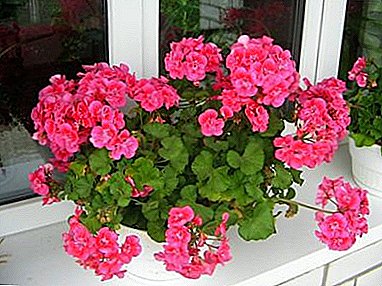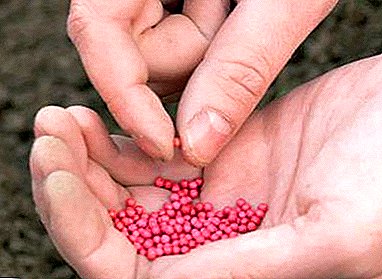
There is nothing surprising in the fact that seed granulation was invented by a farmer. Only this farmer, Masanogu Fukuoka was still a phytopathologist, and at the same time a philosopher. He called his invention “seed balls” and it happened in the 50s of the last century.
He rolled the seeds into a mixture of clay and water and formed balls. The main idea was to protect the seeds and the earth. Seeds from birds, the land from loosening. Seed balls he did not plant, but just scattered on the field. In nature, there is no one to dig holes and beds. It is not known whether he planted carrots, but his followers learned to granulate almost all the small seeds.
From the article you will learn about planting granulated seeds in open ground and maintenance, as well as how many days a carrot rises after sowing.
What is it and how to plant?
Now clay is not the main component in granulation. There are such devices - granulators. They are widely used in pharmaceuticals, confectionery and other industries. Everyone is familiar with vitamins, fertilizers, food for dogs and cats. That is granules.
The active substance is applied several layers with desired properties. It may be other substances or protective shells. Seeds covered with shells with growth promoters, fertilizers, moisture retainers: just do not count.
Carrot seeds in granules are not much different from other small-seed plants. They are balls of size 2.5-3.0 mm burgundy.
Granules (or pills) are much larger than the seed that is in its core. Therefore, plant easier and easier. It is easy to keep the right distance between the plants, which means that there is no need for thinning, it takes less labor to produce a crop.
Planting in the open ground is carried out along the furrows, creating indentations for planting seeds. The distances between the furrows, the distances between the holes should be the right size.
Comparison of ordinary and granulated seeds
A comparison of the main parameters of the coated and ordinary seeds is given in the table:
| Options | Granulated Seeds (Bean) | Non-granulated (regular) seeds |
| Nutrients | Contained in granules in the required quantities | It is necessary to make manually |
| Germination | 5-7% higher | Below |
| Shoot period | Stretched, with a delay of up to 2 weeks | Normal, depending on the variety. |
| Seeding rate | Easy to maintain the right rate | Hard to maintain the right rate |
| Seed cost | More expensive than regular | Cheap |
A comparison of the parameters allows us to conclude that the advantage should be given to the granules. But this, if we speak in general. In each case, the decision must be made depending on the specific conditions. It is one thing to plant before winter, another - in early or late spring.
Advantages and disadvantages of the method
 The advantages of pellets over ordinary seeds:
The advantages of pellets over ordinary seeds:
- availability of nutrients and other substances necessary for initial growth;
- reduction of time and labor costs for planting and caring for plants;
- guaranteed quality of seed material;
- stable germination.
Of the disadvantages noted by gardeners, who used planting in pellets, low germination is often mentioned. Those., natural seeds often sprout better than granulated. Therefore, they soon move to the usual way.
But, most likely, it is not the seeds that should be blamed, but the gardener himself. If you comply with all the conditions of choice and work, the result will be worthy.
Another disadvantage is the delay in emergence. But here you can bring the same argument. It is necessary to take into account the peculiarities of one type of landing in front of another, and not to repeat mechanically those methods that we have become accustomed to.
Timing: when to sow?
Carrot is a cold-resistant plant, so it can easily withstand temporary spring cooling.
- In central Russia, in the Urals, they begin to plant in early or mid-April. Landings are completed in early May.
- In the southern areas you can plant from March to the first days of May.
- Siberian lovers of this root plant in April and May.
In all cases, we must remember that average daily temperatures should be steadily kept at 14-15 degrees. At the same time, the soil warms up to 7–8 degrees, temporary cooling is no longer foreseen. But, if they happen, do not worry. Carrots easily survive the temperature of mine 4 degrees.
How to plant to quickly ascended?
Before you start planting carrots in granules, you need to thoroughly prepare. Here is what you need:
- Prepare inventory, check its performance. These can be seeders (planters), syringes, self-made dispensers, watering can.
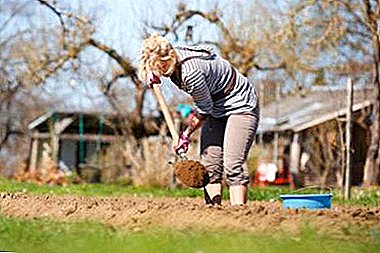 Create the necessary stocks of biohumus, humus.
Create the necessary stocks of biohumus, humus.- Prepare the seeds. Although the granules are ready for planting, it is necessary to check their condition and compliance with the storage time.
- To cultivate the soil: remove weeds, dig up a garden bed, create furrows for introducing seeds into the soil.
The secret of the correct fit is to comply with all sizes of elements of the scheme. The elements of the scheme are the grooves, their depth and the distances between them, as well as the grooves for planting seeds and the distance from one groove to another.
- Furrows are created with any device that can form a row 2-3 cm wide and 3-4 cm deep. An ordinary board can be used. The distance between the furrows (interrow width) should be approximately 15 cm for early ripening varieties. If the variety is late or medium late, the distance should be increased to 20 cm.
- In each furrow, grooves are made into which the seeds will be planted. Deepening can be done even with a stick, even with a finger. The optimal distance between carrots is 5-7 cm. If you make it smaller, thickening may occur and you will have to do thinning.
- Sheds abundantly shed water. It is useful to add a biological product to the water.
- Put the seeds in the groove and sprinkle with biohumus or humus.
Important! Seeds, covered with humus, will emerge earlier.
Then you can watch a video with detailed instructions for planting carrot granules:
How to care after sowing?
 Caring for carrots after planting is mainly in the correct and timely watering. Before the period of the formation of the root should be watered at least twice a week.
Caring for carrots after planting is mainly in the correct and timely watering. Before the period of the formation of the root should be watered at least twice a week.
Water should be warm. Cold water can destroy crops. Water consumption per 1 sq.m. soil about 3-4 liters. When the roots begin to form, water should be less often, once a week, but pour water 3 times more.
In addition to watering it is necessary to monitor the condition of the soil. Rows need to regularly loosen and fight weeds.
Common mistakes: why do they occur?
Although the landing process is not complicated, it does not always go without errors. Major errors:
- purchasing seeds that are zoned for another locality;
- planting granules with an expired shelf life;
- violation of the terms of landing;
- non-compliance with agrotechnical terms;
- violation of the distance between rows and crops;
- excessive depth of landing;
- insufficient soil moisture.
Only the observance of all the rules, and a reasonable approach can serve as a guarantee for the normal development and maturation of any plant.
Then you can watch a video about common mistakes when planting carrots in granules:
What to do if it does not go up for a long time?
In general, shoots should appear in two weeks. But a week has passed, another, but there is no germination. Or there is, but very little. So mistakes were made. What can be done? There are not so many ways. Rather, just one. It is necessary to re-repeat the whole process, just do everything very carefully and accurately. But if you do not have time before the beginning of June, it is better to start preparing for the pre-winter landing.
Carrots - one of the most common and unpretentious root crops. Adhering to simple rules, everyone can get a good harvest and use all the advantages of this plant. The remarkable invention of the Japanese scientist, granulation of seeds, made it possible to obtain a crop easier and more stable than ever before.


 Create the necessary stocks of biohumus, humus.
Create the necessary stocks of biohumus, humus.

